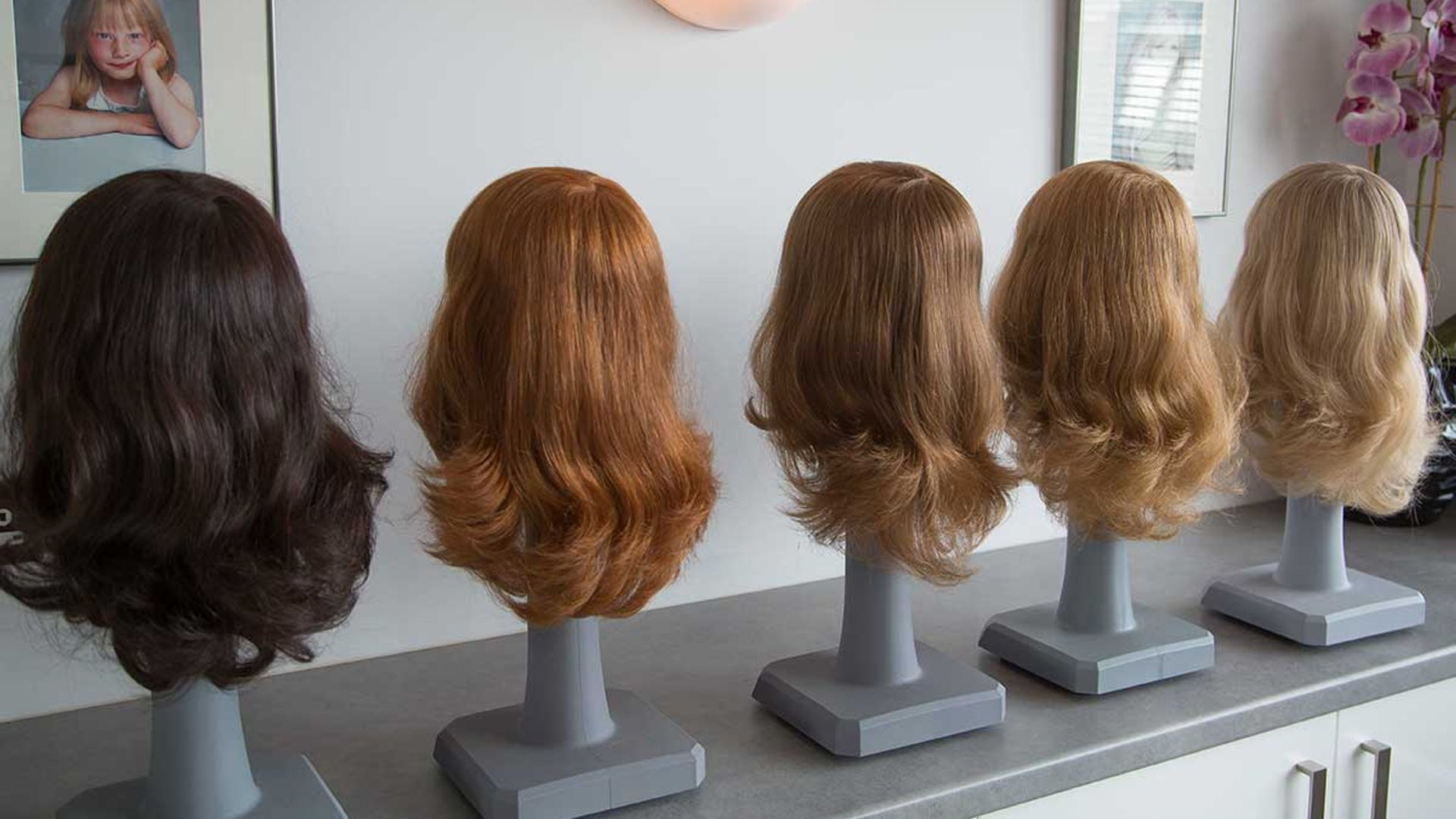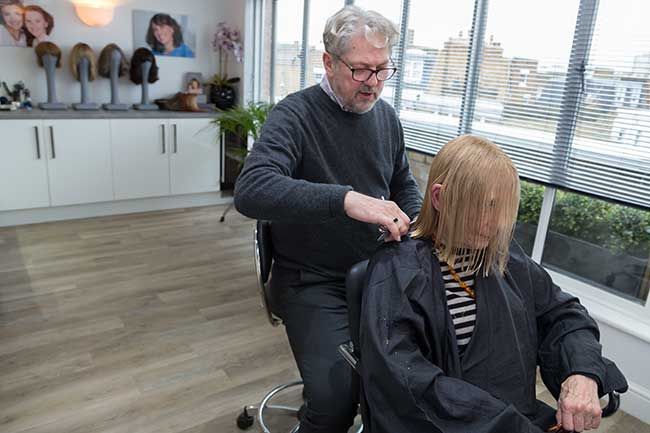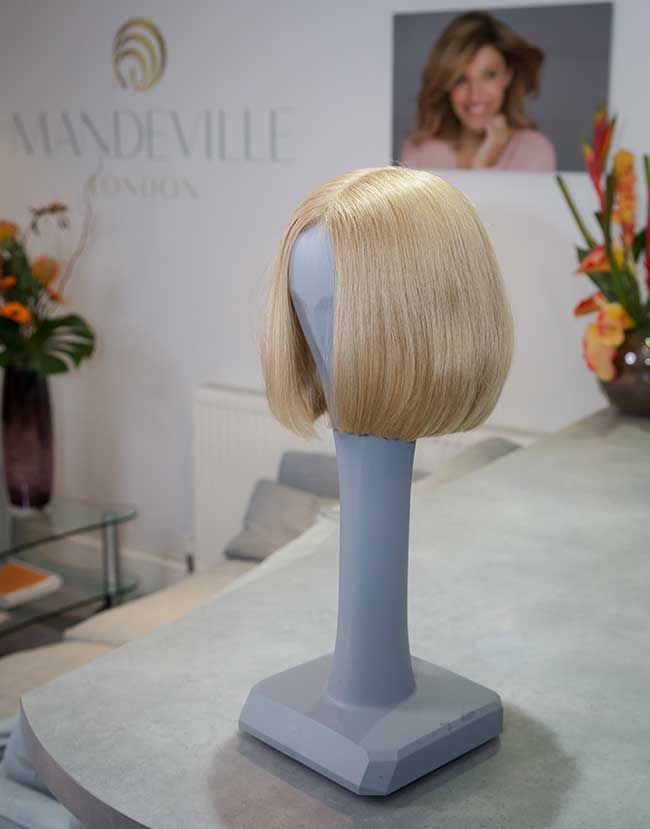Being told you have cancer is a life-changing moment and one that everyone expects will be emotionally difficult to deal with. Once you get on the treatment treadmill, life starts to take on a new normal, but your hair falling out if chemotherapy is part of this new experience, can be another major hurdle to overcome.
For some, although it may seem weird if you’ve never been through it yourself, hair loss can hit harder even than diagnosis. The problem with losing your hair is that your illness suddenly becomes everybody else’s business. It is possible, if you choose to, to receive a diagnosis of cancer and not share it with everyone you know. To slow down, to focus on hospital visits, but to still have the ability to meet up with friends and have your mind taken off the ordeal you’re going through. To have a break from talking and thinking about cancer. To feel normal.
When your hair starts to fall out, this changes. When it happened to me I panicked. It happened sooner than I thought it would and I wasn’t prepared. I knew I needed a wig, but I didn’t know where to start and the research seemed overwhelming. There were so many options but I knew what I wanted – I wanted to blend in. To feel like me again, to be able to escape my illness when I wanted to. And I definitely didn’t want too much sympathy.
RELATED: How to spot signs of skin cancer
Thankfully for me, I’ve discovered that this and more is possible these days. My fears of an itchy, hot, sweaty scalp, of a hairpiece that blows off in the wind have been fully allayed. I have Robert Frostick, one of the directors of Mandeville London to thank for this – the company has been fine-tuning the real hair wig process for the past 50 years and the results are amazing. My wig can be brushed, washed, parted and styled like any real head of hair. And while of course I’d rather I didn’t need to wear one, I must admit, once I had got used to the processes involved, I discovered there were even some benefits of having a good hair day every day of the week.
The original founders of Mandeville London took many, many years to perfect the perfect wig. The process required a huge investment into research and development of the foundation (the fine mesh the hairs are individually hand tied onto). "It wasn’t just how we knot the wig but the material we use for the foundation which was key," Robert explains. "The net is like a very fine lace but it’s incredibly strong. It’s made on Victorian lace-making machines," he continues.
One of the lace foundations used to create Mandevilles's real-hair wigs
"We went through many prototypes to find the right material – and the research cost hundreds of thousands of pounds in wasted lace that just wasn’t right. But it was worth the effort, and it’s why we can now make wigs that look like growing heads of hair." Each hair is hand knotted. "It’s a real labour of love," says Robert. "You’d have to love what you’re doing to do that sort of work – there are over 70,000 hairs on a head. It takes us four or five months to make a wig, a huge amount of work goes into it but the end result speaks for itself."
RELATED: Shannon Doherty bravely shows photos of her chemo journey
The questions I had, when I embarked on this process, were endless. So I’ve pulled together this article in the hope of making the process simpler for anyone else who finds themselves in the position of needing a wig – and fast. Hopefully I’ve thought of every question you might have, but one message I’d like to make sure you go away with it's that it's not as bad as you fear.
Robert's very private salon puts you at ease as you pick out a wig and then get it styled
I still don’t have my normal hair growing back – and Robert tells me when it does, it’s likely to be very odd and different at first, so I’ll likely want to hang onto my wig for a bit. But what I can do is go shopping, meet new people, even meet old friends, and my hair be nothing I need even think about. They don’t notice, they don’t mention it and I just feel like me. I don’t wear it all the time yet – sometimes I can’t be bothered and if I’m just hanging around at home, I tend to just pop on a beanie. But whenever I go out, I can do so with my head held high. And I’m even getting used to washing it!
What different types of wigs are available to buy?
There are many different types of wigs, from synthetic to real hair, pre-made to custom and each come with their benefits of course. For me, looking as true to my normal hair as possible meant I was eager to have a wig made from real hair if I could. At Mandeville, each hair is hand-tied into the very thin, light and flexible lace foundation which means you can part it anywhere, like a real head of hair. The thin lace base is also virtually invisible so when the hair is parted, you see the scalp.
When should you have your wig fitted?
I was a little late with this because my hair loss was unexpected, so by the time I met Robert I was already partially bald. However, if you have the option, it’s good to visit early. "Ideally it’s best to come before your hair falls out because then we have an understanding of how much hair you have so we can assess what size foundation we want to go for," Robert explains. "With chemotherapy you're moving the goalposts – first you’ve got hair, then you haven’t got hair and then the hair grows back. It’s good to get an idea of what all these stages will look like. If you make a foundation that fits tightly over a bald head, then there’s not much room for new hair to grow. Our foundations are not stretch foundations so you have to assess the best option."
Robert has cut hair for a number of celebrity clients so I was in good hands
What’s the difference between off-the-shelf and custom made wigs?
For people undergoing chemo, Robert recommends an off-the-shelf wig and I was amazed at the options that were available to me when I arrived. You need a wig that’s slightly longer than your usual haircut so it can be styled to suit, and I managed a pretty good match. You can have wigs made to measure too – which allows very specific options to be chosen.
"But making a made-to-measure wig takes four or five months, and most people having chemo want a solution asap,” Robert explains. “Usually I see them shortly after they’ve been diagnosed and they might be starting treatment in two or three weeks. Someone with alopecia is different. That’s an ongoing saga and clients are usually much happier to wait. With made to measure the world opens up – you can have the choice of densities like fine hair, medium hair, course hair. You can choose straight hair, to have some movement, a loose wave, a medium wave – all the choices you can imagine."
Do you have to wash your wig?
Washing the wig is important – just like your real hair, it sits on your scalp and as you sweat, it gets dirty. How often you need to wash it depends on your lifestyle but it’s usually at least every 10 days. I’ll admit this part of the learning process felt a bit overwhelming. You need to learn how to pin your wig onto a stand, and then when and how to use each of the 3 cleaning products. But Robert has videos on a members area of his website so if you’ve forgotten, you can remind yourself. And it’s like anything – once you practice, it gets easier.
It felt very reassuringly like being at the hairdressers having my own hair cut
Can you style and curl your wig?
This is real human hair so you can style it however you would style your real hair, but since there’s no regeneration in a wig, you need to be aware of the damage styling can do. "Heat is damaging to hair but there’s various degrees of heat," Robert explains. "If you’re putting tongs on the hair, that’s a very direct heat and it will damage the hair over a period of time. Blowdrying is damaging too, but not as bad and it depends how you do it. If you use a warm heat, it’s fine. You just want to avoid really cooking the hair up."
Does anyone know you’re wearing a wig?
Nobody I’ve met has mentioned my hair other than to say I look good and well, in general. I genuinely don't think people who don't know have noticed. I’ve had photographs taken and even I don’t think it looks like it’s not my hair so I’d say no – nobody knows. Obviously my closest family and friends do know, which is fine. But being able to head to the supermarket or into town and not stand out is really great. Just being able to get on with life really.
Is it itchy and hot, wearing a wig?
The finished product has given me so much confidence back
You can tell you’re wearing the wig, but it’s not itchy and not really hot either, although I was worried about that too. I’d say to start with it just felt like I was wearing a hat, and while it wasn’t uncomfortable, I felt like taking it off when I got home. The more you wear it though, the less you notice.
"It’s mainly because our wigs are so light," explains Robert. "The foundation plus the hair weighs maximum 170g and the foundation is full of holes so the scalp can breathe through it. It’s much lighter than the first kind of wigs so people don't tend to find it uncomfortable."
How does the wig stay on?
"Whilst you’ve got some real hair left, we use clips," Robert explains. "But if you don’t have hair we use double sided medical tape to keep it on." In my case, I had hair at the back which I didn’t want to lose – it mixes in with the wig hair and it gave something for the wig to clip into. But as more hair falls out, I’m swapping clips for tape. It’s pretty quick to put on when you get the hang of it.
How do you take the best care of your wig?
You pin your hair onto a stand in order to care for and wash it
I’m being very good with mine and the care side of things does take some time in the beginning. I think I’m speeding up but getting it pinned on right and washing and drying it is a process that I need a couple of spare hours to do. I am hopeless with hair though – it was bad enough when it was my own. It feels a bit like learning to be a hairdresser and I know it will speed up in time. If you already know how to style hair, you probably won't find it so difficult.
"It’s important to take care of your wig," agrees Robert. "You need to think of it like a garment. Compare it to a cashmere sweater, but a sweater you’re wearing every day for 16 hours a day, and washing every 10 days – imagine what it will look like in a year. You’re asking a lot of a wig to stay looking great, so you need to treat it well."
How long will your wig last?
We like to think you’ll get approximately 18 months to two years, possibly longer," Robert says. "It does depend on how you wear it. If you’re someone who looks after it, it can last longer – we’ve had clients who have made their wigs last three years but that’s not everybody. You should be able to get a couple of years out of it though and we can repair the wigs, so if anything does go wrong before that we should be able to fix it."
To learn more about choosing a wig, visit the Mandeville London website.















